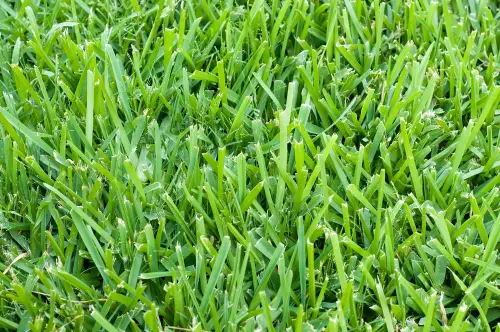Grass for Shaded Areas: Finding the Best Grass Seed for Shade

Nearly every homeowner has some areas of their lawn that don’t get a lot of sunlight. These areas could be under large trees, against a north-facing wall, or in the shadow of a shed or gazebo. Whatever the case, you’ve probably noticed that grass struggles to grow in these shaded spots. Are you doomed to endure brown, withered patches of grass in the shade? Not at all. You just need to know how to choose, plant grass for shaded areas, and maintain it.
Table of Contents:
Understanding Shade in Your Lawn
Your middle school science teacher probably taught you about the magic of photosynthesis, a process where plants absorb sunlight, carbon dioxide, and water to produce the energy they need to grow and flourish. When a key ingredient like sunlight is missing, grass struggles to thrive.
Without adequate sunlight, grass will:
- Grow more slowly
- Appear thin and pale
- Grow shallow, weak root systems
- Be more susceptible to disease
- Struggle to recover from stress, like foot traffic and drought
Fortunately, different types of grass have varying tolerances for shade.
Top Grass for Shaded Areas
Grass is divided into two large categories: cool-season grasses and warm-season grasses. If your area experiences cold and frosty winters, choose cool-season grasses for your lawn.
If you live in a place with relatively mild winters and hot summers, go with warm-season grasses. Many Americans who live in the middle of the country are in a “transitional zone,” which means you can plant either type or a mix of both.
Cool-Season Grass That Tolerates Shade
Fescue

Fescue has a fine to medium texture and a deep green color that many homeowners enjoy. It adapts well to shady conditions and grows in dense clumps. You can mix fescue with other shade-tolerant grass to create a diverse and resilient lawn.
Perennial Ryegrass

Perennial ryegrass establishes quickly and holds up to heavy foot traffic, making it ideal for homeowners with kids and pets. It has a bright green color and a fine to medium texture. While it can tolerate light to moderate shade, it’s not the best choice for deep shade areas.
Rough Bluegrass

This cool-season grass is one of the most shade-tolerant species. It thrives in moist, shady conditions, making it an excellent choice for lawns with significant shade.
Warm-Season Grass That Tolerates Shade
St. Augustine

One of the most popular choices for lawns with partial shade, St Augustine grass grows broad, flat blades and gives homeowners a dense, carpet-like lawn. It is medium to dark green and tolerates a range of soil types.
Centipede Grass

This low-maintenance grass is light green and offers a fine, dense texture. It’s best suited for lawns with partial shade. Its slow growth means less mowing and lawn fertilization.
Zoysia Grass
.webp)
Zoysia grass is prized for its excellent shade tolerance, though it does best in lawns with partial to light shade. It’s a dense, carpet-like turf that grows slowly and has a medium texture.
Managing Grass in a Shady Lawn
Sometimes, you can’t avoid planting grass in the shade. Besides choosing the right grass for shade, you can take several steps to give your shady lawn an extra boost.
Understand Your Lawn
Observe your lawn throughout the seasons and figure out which areas get more or less sunlight. This helps you decide where to plant grass for shaded areas. Typically, areas of your lawn that receive only three to six hours of sunlight a day are considered “partially shaded.” This is where you should plant grass for shade.
Create More Sunlight
Are trees, shrubs, or other plants creating pockets of shade on your lawn? The easiest way to help your grass is to trim branches and limbs to bring more direct sunlight onto your lawn.
Water Less Often
In the shade, water evaporates more slowly, meaning soil can hold onto moisture for longer. To ensure your soil doesn’t get too soggy, water shaded areas less than other parts of your lawn that receive a lot of sunlight throughout the day.
Keep Shaded Grass Taller
Longer grass blades can absorb more sunlight, which is especially important for grass in shaded areas. Adjust your mower height to keep shaded grass taller, and never cut more than one-third of the grass’s height.
Fertilize Less Often
Grass in the shade grows more slowly than grass that can absorb lots of energy from the sun. That means it won’t be able to utilize as much fertilizer as its sunlight-chugging counterpart. It may be a good idea to use less fertilizer in the shady areas of your lawn.
Need Help Finding the Best Grass Seed for Shade?
Dealing with shady areas of your lawn can be tricky, especially if your grass is competing with the roots from nearby trees and shrubs for resources. If you aren’t sure what type of grass seed to plant for your lawn, contact us at The Grounds Guys®.
Your local The Grounds Guys team we’ll be happy to assess your lawn and make a professional recommendation. We can also plant new grass for shaded areas, including shade pockets. We’ll give you the best lawn care services around. That’s our Neighborly Done Right Promise™ to you. Request a free estimate.


